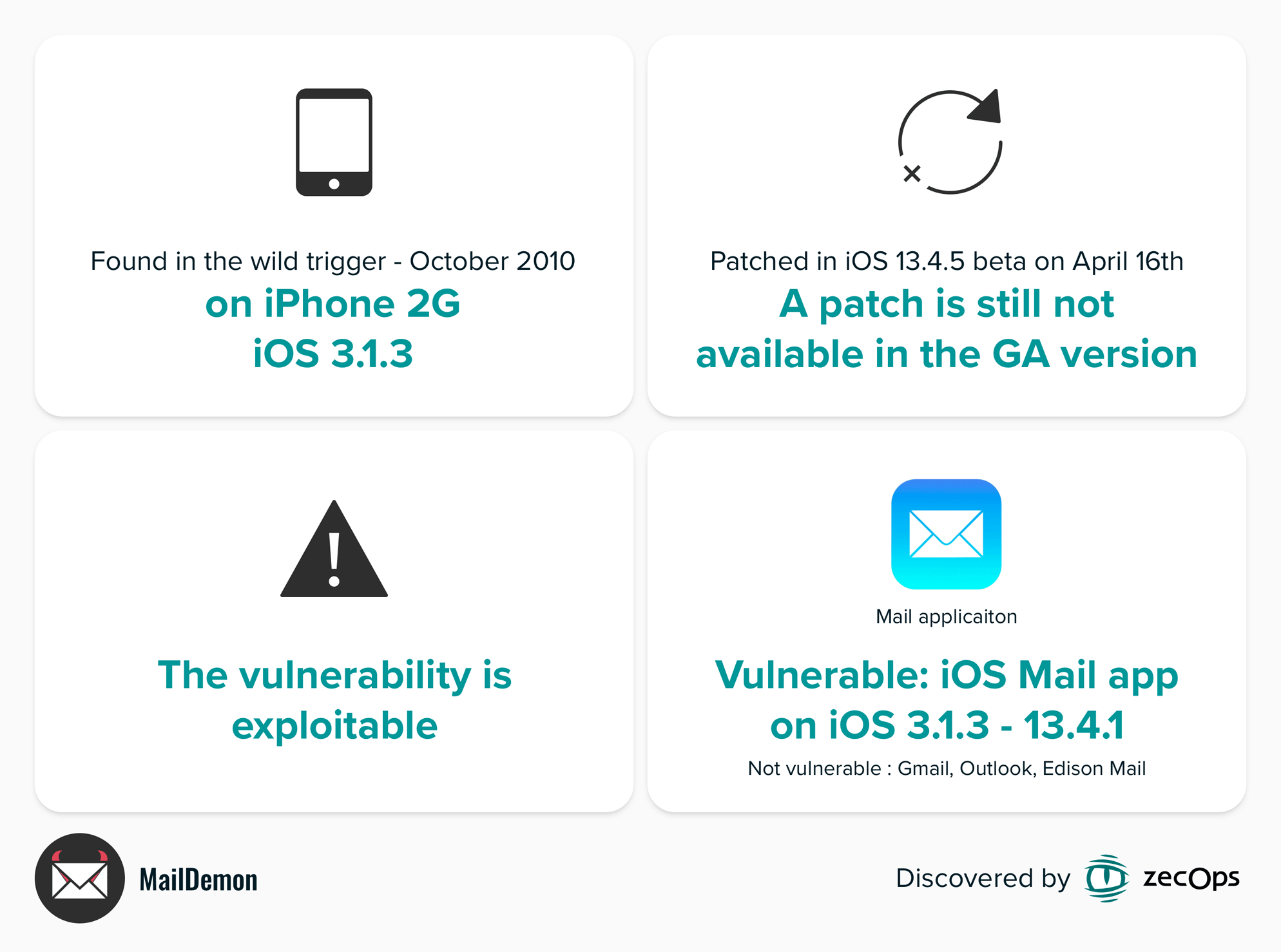
It was only less than a month that Apple confirmed one of the longest-running vulnerabilities in iOS history.
Affecting millions of iPhone users, the discovery first reported by researchers from ZecOps, the case has just gotten bigger.
This is because research suggests that every Apple iPhone ever made is impacted by this security alert.
“We continued our research of the MailDemon vulnerability,” said ZecOps CEO Zuk Avraham. “We were able to prove that this vulnerability can be used for Remote Code Execution. Unfortunately, a patch is still not available.”
ZecOps has put even more detail about the case in a blog post, where the San Francisco-based cyber security firm explained both the vulnerability and triggers, which it reports date all the way back to October 22, 2010 on an original 2G iPhone running iOS 3.1.3.
"One thing is certain, there were triggers in the wild for this vulnerability since 2010," explained ZecOps.
"As we previously hinted, MailDemon is a great candidate for exploitation because it overwrites small chunks of a MALLOC_NANO memory region, which stores a large number of Objective-C objects. Consequently, it allows attackers to manipulate an ISA pointer of the corrupted objects (allowing them to cause type confusions) or overwrite a function pointer to control the code flow of the process. This represents a viable approach of taking over the affected process."
MailDemon appears to be even more ancient than we initially thought. There is a trigger for this vulnerability, in the wild, 10 years ago, on iPhone 2g, iOS 3.1.3
In April, Apple acknowledged that every iPhone released since 2012 was vulnerable to remote attacks through the iOS Mail app.
However, the company initially played down the severity of this case, by saying that it had seen "no evidence" of exploits.

But researchers at ZecOps have proven otherwise.
They found that not only the bug is being triggered in the wild, but that the first potential triggers existed a decade ago and every iPhone ever made is vulnerable.
Apple has promised to fix this vulnerability in its iOS 13.5 release, which should be a relief to the many old iPhone users.
But the bigger question is whether Apple wants to release a patch for previous iOS versions to protect older devices that are still in use.
The iPhone 6, for example, is regarded as one of Apple's most popular iPhone in terms of sale number, and was still beig sold though the company's partners as recently as 2019.
But before Apple can really patch the flaw, ZecOps said that the safest way to prevent hackers from exploiting the flaw is by disabling the native iOS Mail app, and switch to others, such as Google Gmail or Microsoft Outlook.